Note: the following is based on a talk I gave one week prior to the election. Some of it will be familiar to those who have read my book, A War for the Soul of America: A History of the Culture Wars. For the purposes of this post, I have mildly revised the transcript based on the results, which I admit surprised me and changed some of my thinking. History moves fast.
—————-
The 2016 U.S. presidential campaign was remarkable. On the one hand we had the first woman ever nominated for president by one of the two major political parties, a truly historic landmark that is a consequence of feminist activism going back a long time. On the other hand… we have Donald Trump.
What does Trump represent? Pundits and experts continue to wring their hands in an effort to answer that question.
Perhaps the reality television mogul represents the apex of a culture of narcissism that Christopher Lasch lamented in 1979. Because one thing is for sure: his campaign was, if nothing else, about him. Bigly. Narcissists might make good candidates, when they speak before large and mostly adoring crowds. But how will an ultra-narcissist fare in the White House, where he will spend more time in front of the press than his admirers?
Perhaps Trump represents the implosion of the Republican Party. During the Republican primaries, one of Trump’s main strategies that catapulted him to victory was to simply insult his rivals. That worked to perfection, as he easily dispatched the likes of “Low Energy” Jeb Bush, “Lyin’” Ted Cruz, “Little” Marco Rubio, and the rest of the GOP field—making them seem pathetic in the process. The conservative party’s ideas, once considered fresh—indeed, even revolutionary when spoken by Ronald Reagan—now seem stale at best. Residues of an older era in American history.
I wrote the above paragraph prior to the election. Now it’s unclear what Trump represents to the GOP because, depending on Trump’s direction, the GOP might not have any incentive to rethink things. Trump might govern like recent Republican president George W. Bush–tax cuts, culture wars, real wars. Or he might govern like an America First (white?) nationalist and build a wall and infrastructure while pulling the United States back from its international commitments. Or some monstrous hybrid? It’s all so unpredictable.
In the aftermath of the election, it seems clear that Trump potentially represents the implosion of not just one political party but two parties. By nominating Hillary Clinton the Democratic Party gambled that the way its been selling itself for decades–multicultural and neoliberal–was a solid enough strategy to defeat Trump and retain the White House. Given Trump’s victory across much of the Midwest–Trump did not collect more votes than Clinton, but he collected more of the right ones as determined by an archaic but entrenched Electoral College–the Democrats might feel the need to follow the Bernie Sanders and Elizabeth Warren side of the party and ditch its neoliberal commitments. I hope this happens, but this, too, is hard to predict.
There are other really important things to think about in the aftermath of Trump’s victory. Did his anti-free trade rhetoric and more general economic talk, which according to Christian Parenti, who listened to several Trump campaign speeches from beginning to end, motivate voters as much as his demagogic, racist, and sexist appeals? This is hard to know. The ongoing debate among and between leftists and liberals is too often couched in an either-or framework: either class or race, either economic anxiety or sexism, etc. I think such either-or arguments are unhelpful, but I do want to suggest that the best lens to view Trump is through the lens of a history of the social movements of the 1960s, and the reaction to them ever since.
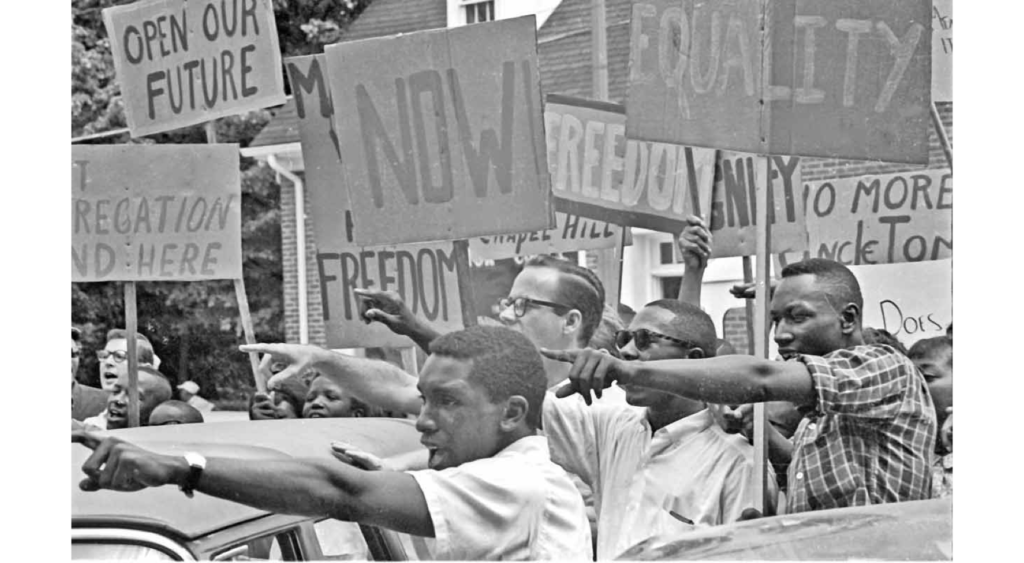 The sixties gave birth to a new America, more open to new peoples, new ideas, new norms, and new, if conflicting, articulations of America itself. This fact, more than anything else, helps explain why the nation grew more divided during and after the sixties than at any period in American history since the Civil War. Clinton versus Trump is a legacy of those changes that happened in the 1960s, and of the polarization that has settled across the land ever since–the polarization that came to be called the culture wars by the early 1990s.
The sixties gave birth to a new America, more open to new peoples, new ideas, new norms, and new, if conflicting, articulations of America itself. This fact, more than anything else, helps explain why the nation grew more divided during and after the sixties than at any period in American history since the Civil War. Clinton versus Trump is a legacy of those changes that happened in the 1960s, and of the polarization that has settled across the land ever since–the polarization that came to be called the culture wars by the early 1990s.
The radical political mobilizations of the sixties—civil rights, Black, Chicano, and Ethnic Power, the American Indian Movement, feminism or women’s liberation, gay liberation, the antiwar movement—these movements destabilized the America that millions knew. It was only after the sixties that many Americans, particularly conservatives, recognized that there was seemingly a threat to their once great nation.
After the sixties, whether one thought the nation was in moral decline was often directly related to whether one was liberal or conservative. Joseph Epstein called the sixties “something of a political Rorschach test. Tell me what you think of that period,” he wrote, “and I shall tell you what your politics are.” Those who argued that the sixties had ushered in anarchy, and that such confusion threatened the very fabric of the nation, tended to be conservative.
In the postwar years—the nearly two decades between the end of World War II and the assassination of John F. Kennedy—a cluster of powerful conservative norms set the parameters of American culture. These cultural standards are best described by the phrase “normative America,” an analytical category I use to refer to a group of assumptions and aspirations shared by millions of Americans during the postwar years—the fifties. Normative Americans (represented here by a Norman Rockwell painting that is fit for the season! Rockwell was ironically a liberal Democrat who lived in some non-normative ways even though his art best represented normative Americans) prized hard work, personal responsibility, individual merit, delayed gratification, social mobility, and other values that middle-class whites recognized as their own.
Fifties Americans lived according to stringent sexual expectations: sex, whether for procreation or recreation, was reserved for heterosexual marriage. Americans behaved in ways consistent with strict gender roles: within the confines of marriage, men worked outside the home and women cared for children inside it.
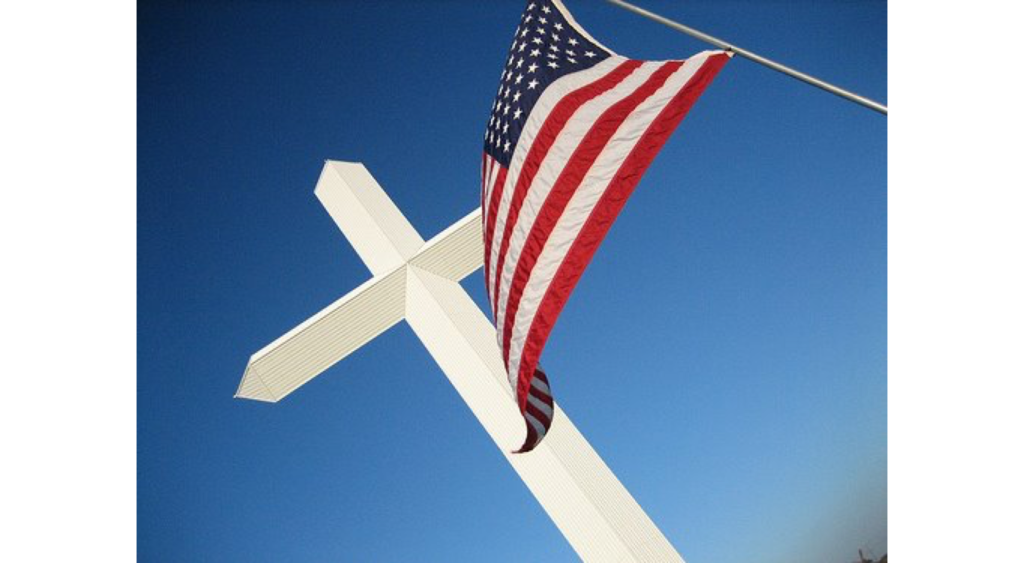 Fifties Americans believed their nation was the best in human history: those aspects of American history that shined an unfavorable light on the nation, such as slavery, were ignored or explained away as aberrations. They assumed that the nation’s Christian heritage demonstrated its unique character: the United States of America really was a “city on a hill,” a phrase Ronald Reagan borrowed from John F. Kennedy, who borrowed it from the Puritan John Winthrop, who borrowed it from Jesus.
Fifties Americans believed their nation was the best in human history: those aspects of American history that shined an unfavorable light on the nation, such as slavery, were ignored or explained away as aberrations. They assumed that the nation’s Christian heritage demonstrated its unique character: the United States of America really was a “city on a hill,” a phrase Ronald Reagan borrowed from John F. Kennedy, who borrowed it from the Puritan John Winthrop, who borrowed it from Jesus.
The normative America of the postwar years—of the 1950s—was more pervasive, and more coercive, than before or since. An unprecedented number of Americans got in line—or aspired to get in line—particularly white, heterosexual, Christian Americans. Even those Americans barred from this idea of American identity by virtue of their race, sexuality, or religion often felt compelled to demonstrate compliance. In part, such an extraordinary degree of conformity had to do with Cold War imperatives: a global struggle against an alien system required cultural and ideological stability.
But even more, the cohesiveness of this American culture was a byproduct of the internal threats to it—threats made manifest during the sixties. Dark clouds of dissent were on the horizon. The new America given life by the sixties—a more pluralistic, more cosmopolitan, more secular, more feminist America—was built on the ruins of normative America. This basic historical fact explains the polarization of American political life also known as the culture wars. The new America given life by the sixties also helps us understand the current Democratic Party, led by a black man with a Muslim name, and now a woman.
It also explains the jeremiads about a once great America that have flooded our political discourse ever since.
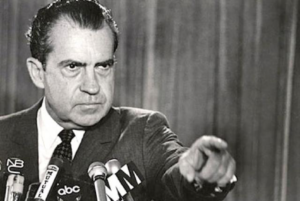 President Nixon expressed such an idea in his second inaugural address of January 20, 1973:
President Nixon expressed such an idea in his second inaugural address of January 20, 1973:
Above all else, the time has come for us to renew our faith in ourselves and in America. In recent years, that faith has been challenged. Our children have been taught to be ashamed of their country, ashamed of their parents, ashamed of America’s record at home and its role in the world. At every turn we have been beset by those who find everything wrong with America and little that is right.
For Nixon, American renewal meant forgetting the sixties, when too many Americans quit loving their country unconditionally.
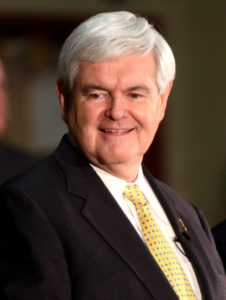 Newt Gingrich, Republican Speaker of the House from 1994 until 1998—who became famous when he engineered a Republican House majority in 1994 by directly taking on the Clinton administration—wrote an entire book, appropriately titled To Renew America, on the idea of post-sixties decline. He wrote:
Newt Gingrich, Republican Speaker of the House from 1994 until 1998—who became famous when he engineered a Republican House majority in 1994 by directly taking on the Clinton administration—wrote an entire book, appropriately titled To Renew America, on the idea of post-sixties decline. He wrote:
From the arrival of English-speaking colonists in 1607 until 1965, from the Jamestown colony and the Pilgrims, through de Tocqueville’s Democracy in America, up to Norman Rockwell’s paintings of the 1940s and 1950s (image), there was one continuous civilization built around commonly accepted legal and cultural principles.
Simply put: for conservatives like Nixon and Gingrich, the America they loved was in distress. Returning to the values that animated the nation in the 1950s was the only way to save it.
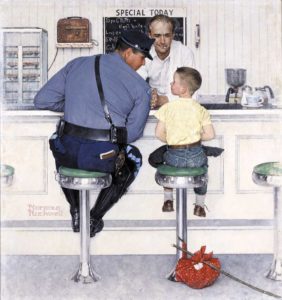 This 1958 Rockwell painting is indicative—it’s called The Runaway. Running away from home was not a dangerous or traumatic event in the normative American imagination. It was a chance to bond with a local police officer over a root beer float.
This 1958 Rockwell painting is indicative—it’s called The Runaway. Running away from home was not a dangerous or traumatic event in the normative American imagination. It was a chance to bond with a local police officer over a root beer float.
Contrast this with a more recent image (below) —from a 2009 photo gallery in the New York Times about teenage runaways. There’s no safe return from the sixties, it seems.
So the sixties divided us. Those on the left, in contrast with conservatives like Nixon and Gingrich, tended to view American life through the eyes of the sixties, or rather, through the eyes of women, racial minorities, gays and lesbians, secularists, and other Americans whose existence symbolized a challenge to normative America.
 Those on the right tend to think that America has gone to hell since the sixties. Trump’s campaign slogan—“Make America Great Again”—is grounded in this narrative of decline. It’s a nostalgic call for life before the social movements of the 1960s endowed blacks, Mexicans, women, gays, lesbians, and other supposedly non-normative Americans with the right to call themselves citizens. With the right to call themselves Americans.
Those on the right tend to think that America has gone to hell since the sixties. Trump’s campaign slogan—“Make America Great Again”—is grounded in this narrative of decline. It’s a nostalgic call for life before the social movements of the 1960s endowed blacks, Mexicans, women, gays, lesbians, and other supposedly non-normative Americans with the right to call themselves citizens. With the right to call themselves Americans.
Now, as I mentioned previously, there are economic elements to the Trump coalition—middle-class decline and the economic anxiety associated with globalization and automation make his demagogic calls to take America back that much more appealing and, perhaps, understandable. But Trump’s pseudo-economic populism is not what makes Trump, Trump.
What makes Trump, Trump is his explicit desire to take America back to a time before the sixties social movements shook up fifties America. Insofar as multiculturalism and feminism represent progress, Trump now stands for the sizable minority of white Americans who wish to erase that progress.
Back before Black Power leader Stokely Carmichael criticized the “white power structure” that had bottled up black freedom for centuries.
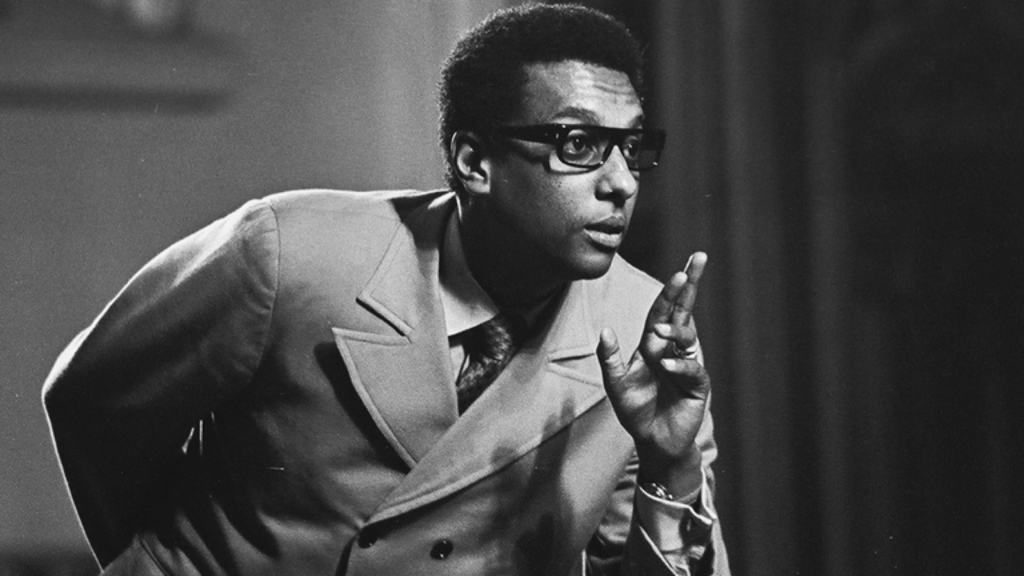 Back before radical feminist Robin Morgan sought to smash patriarchy in the name of a future “genderless society.”
Back before radical feminist Robin Morgan sought to smash patriarchy in the name of a future “genderless society.”
Back before gay liberation activist Martha Shelley informed Americans that homosexuals will “never go straight until you go gay.”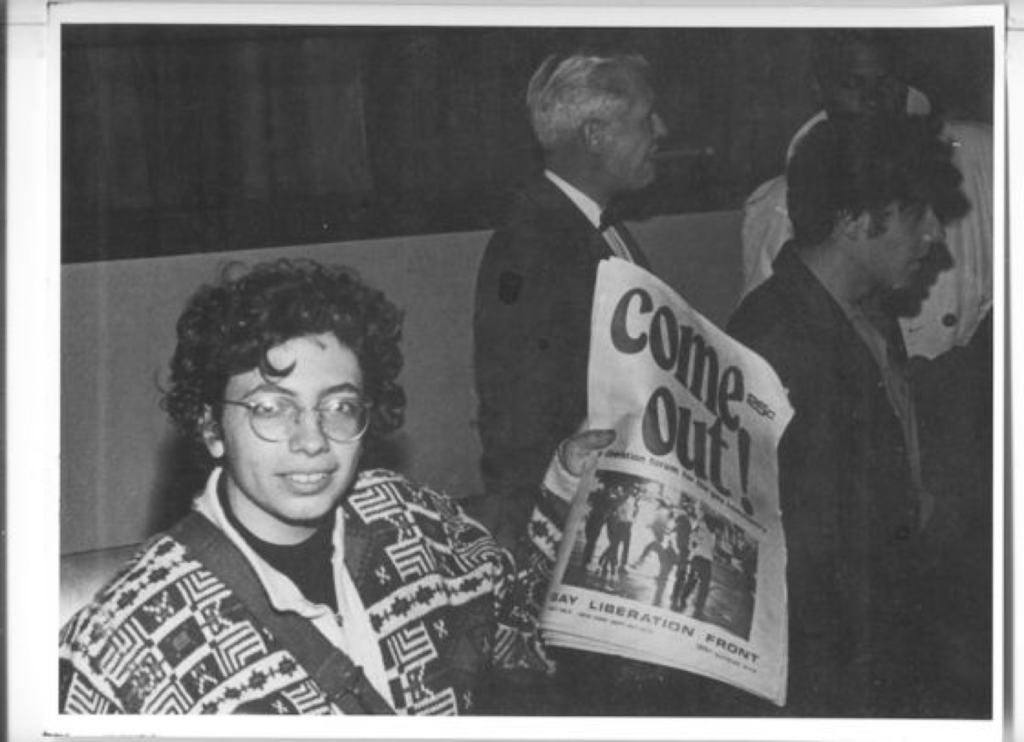
The movements that these three activists helped lead were liberating for a great number of Americans. These movements are what shook up normative America. The shaking up of normative America gave us Obama and Hillary Clinton. But it also gave us Trump.
People uninformed about this history might assume Trump is an alien—he fell out of the sky as a weird aberration. But Trump has been a long time in the making. Trump’s harsh language about people of color is part of a long history of race relations that has forever helped shape American history. Trump might have given the birther movement legs, but there is a history that explains why so many Americans joined a movement that sought to delegitimize the nation’s first black president on racist grounds.
Thanks to the civil rights movement, blacks were granted formal American citizenship by the 1964 Civil Rights Act and 1965 Voting Rights Act. Martin Luther King’s celebrated March on Washington speech, delivered from the steps of the Lincoln Memorial to 250,000 supporters, was to have become the new law of the land. “I have a dream,” King said, “that my four little children will one day live in a nation where they will not be judged by the color of their skin but by the content of their character.” And yet, color continues to handicap a person’s chances of success.
Now, black Americans are eight times more likely than white Americans to experience chronic poverty. The schools many black Americans attend are acutely underfunded relative to those filled by white Americans. Black men are eight times more likely than white men to spend time in prison. And, as we have all witnessed in our social media feeds, unarmed black men are five times as likely as unarmed white men to be killed by police—a stain on American life that has given rise to the Black Lives Matter movement.
So the question: How has racial inequality persisted despite the nation’s formal commitment to equality, which grew out of the civil rights movement? One answer to this: powerful counterrevolutionary forces bent on preserving the color line have been at work ever since the 1960s. The politics of crime confirmed as much. Nixon leveraged “law and order” to help win the presidency in 1968, and ever since then throngs of politicians have used similarly coded messages about black lawlessness to great effect.
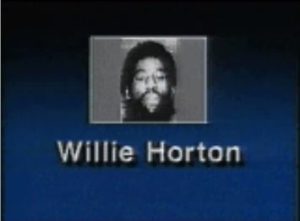 In 1988, Republican George H.W. Bush benefited from a television ad that targeted his Democratic opponent Michael Dukakis by featuring a menacing mug shot of a black convict named Willie Horton. While serving as governor of Massachusetts, Dukakis approved a weekend furlough program to help ease prison overcrowding. In 1987, having never returned to his Massachusetts prison cell from a furlough he was granted the previous year, Horton raped a Maryland woman after breaking into her home and tying up her fiancée. Bush’s campaign manager Lee Atwater, who joked that if he had his way American voters would think of Horton as “Dukakis’s running mate,” hung the albatross of black criminality around Dukakis’s neck.
In 1988, Republican George H.W. Bush benefited from a television ad that targeted his Democratic opponent Michael Dukakis by featuring a menacing mug shot of a black convict named Willie Horton. While serving as governor of Massachusetts, Dukakis approved a weekend furlough program to help ease prison overcrowding. In 1987, having never returned to his Massachusetts prison cell from a furlough he was granted the previous year, Horton raped a Maryland woman after breaking into her home and tying up her fiancée. Bush’s campaign manager Lee Atwater, who joked that if he had his way American voters would think of Horton as “Dukakis’s running mate,” hung the albatross of black criminality around Dukakis’s neck.
 Bill Clinton avoided such racial pitfalls when he ran for president in 1992. He took a tough-on-crime stance and supported capital punishment. During the campaign Clinton returned to Arkansas, where he was governor, to witness the execution of Ricky Ray Rector, a mentally incapacitated black man. In a similar nod to white voter solidarity, Clinton condemned rap artist Sister Souljah for an interview in which she claimed the deadly 1992 Los Angeles riots were in some measure justified. “If black people kill black people every day, why not have a week and kill white people?” Speaking before Jesse Jackson’s Rainbow Coalition, Clinton compared Souljah to white supremacist David Duke. This comparison thus insulated Clinton from extremists and, more importantly, from Jackson and those like him in the Democratic Party who continued to talk about race.
Bill Clinton avoided such racial pitfalls when he ran for president in 1992. He took a tough-on-crime stance and supported capital punishment. During the campaign Clinton returned to Arkansas, where he was governor, to witness the execution of Ricky Ray Rector, a mentally incapacitated black man. In a similar nod to white voter solidarity, Clinton condemned rap artist Sister Souljah for an interview in which she claimed the deadly 1992 Los Angeles riots were in some measure justified. “If black people kill black people every day, why not have a week and kill white people?” Speaking before Jesse Jackson’s Rainbow Coalition, Clinton compared Souljah to white supremacist David Duke. This comparison thus insulated Clinton from extremists and, more importantly, from Jackson and those like him in the Democratic Party who continued to talk about race.
 Let’s focus a bit more on David Duke as a way to understand the current moment. He and open racists like him have been pariahs since the 1960s due to the fact that the civil rights movement made such political sentiments taboo. Obviously Clinton could never have embraced Duke as a Democrat, even though he was making coded racial claims in order to win over white voters, because Clinton also needed black voters. Even Republicans, who have been the true beneficiaries of coded racial slogans such as “law and order,” have shunned open racists like Duke. Black Americans long ago abandoned the party of Lincoln, but even Republicans have felt it necessary to speak in code when it comes to race, which points to the success of the 1960s liberation movements.
Let’s focus a bit more on David Duke as a way to understand the current moment. He and open racists like him have been pariahs since the 1960s due to the fact that the civil rights movement made such political sentiments taboo. Obviously Clinton could never have embraced Duke as a Democrat, even though he was making coded racial claims in order to win over white voters, because Clinton also needed black voters. Even Republicans, who have been the true beneficiaries of coded racial slogans such as “law and order,” have shunned open racists like Duke. Black Americans long ago abandoned the party of Lincoln, but even Republicans have felt it necessary to speak in code when it comes to race, which points to the success of the 1960s liberation movements.
Until now. Trump discarded code. He speaks openly about how a judge can’t be trusted because he’s “Mexican.” Trump openly represents masculine white nationalist America. Which is why David Duke, among others on the artfully titled “alt-right,” has very publicly endorsed Trump. When Trump says things that make the establishment cringe—when he says things that are not “politically correct,” a term that emerged as a response to the sixties social movements to mean “not racist” or “not sexist”—he is showing that he has given up the coded language that has defined American politics since the 1960s. Trump is a Frankenstein. Republicans made him in their reaction to the sixties social movements. When I gave this talk on November 1, I said that now Republicans are horrified by the monster of their own creation. I assumed Trump was going to lose, perhaps in a landslide. But it appears the arc of the moral universe does not bend towards justice, or that it is even longer than we ever imagined.


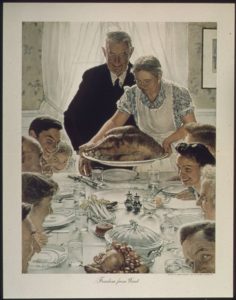


7 Thoughts on this Post
S-USIH Comment Policy
We ask that those who participate in the discussions generated in the Comments section do so with the same decorum as they would in any other academic setting or context. Since the USIH bloggers write under our real names, we would prefer that our commenters also identify themselves by their real name. As our primary goal is to stimulate and engage in fruitful and productive discussion, ad hominem attacks (personal or professional), unnecessary insults, and/or mean-spiritedness have no place in the USIH Blog’s Comments section. Therefore, we reserve the right to remove any comments that contain any of the above and/or are not intended to further the discussion of the topic of the post. We welcome suggestions for corrections to any of our posts. As the official blog of the Society of US Intellectual History, we hope to foster a diverse community of scholars and readers who engage with one another in discussions of US intellectual history, broadly understood.
Thank you Andrew: It’s not easy to condense urgent historical lessons of several decades into a blog post, but you’ve done that here.
Perhaps it should be noted in all fairness to Norman Rockwell, that he likewise can be viewed as integral to the changes that occurred in the 1960s. Consider, for example, the following works by Rockwell:
“The Jury Room” (1959), “Golden Rule” (1961, appeared on Saturday Evening Post cover), “The Problem We All Live With” [six year-old Ruby Bridges escorted by federal marshals past jeering mobs] (1964), “New Kinds in the Neighborhood” (1967), “Southern Justice” [or ‘Murder in Mississippi’] (1965), “Blood Brothers” (1968). Rockwell also painted the iconic “Rosie the Riveter” cover for the May 29, 1943 edition of The Saturday Evening Post, the first visual image to incorporate the “Rosie” name and which came to play a prominent role in women’s liberation and feminist iconography.
Moreover, he painted a magazine cover portrait of Nehru for the Saturday Evening Post (1963), and for
“the July 27, 1965 edition of Look, Rockwell did an illustration to accompany an article on President Lyndon Johnson’s War on Poverty program for the poor, entitled “How Goes the War on Poverty.” Rockwell’s illustration featured a “helping hand” clasped to another’s seeking help, superimposed over a background of diverse faces with a quote from President Johnson lettered into the painting: “Hope for the Poor, Achievement for Yourself, Greatness for Your Nation.” In the following year, for the June 14, 1966 edition of Look, Rockwell did the cover art and four other pieces inside the magazine helping to illustrate a story on The Peace Corps – “J.F.K.’s Bold Legacy.” Rockwell’s cover piece included a profile of John F. Kennedy and others who actually served in the Peace Corps (some of whom also modeled for Rockwell as he did the painting), including one African American female. All were shown on the cover in profile looking left, with Kennedy in front. Rockwell had thrown himself into the Peace Corps project, actually visiting Peace Corps volunteers in action in Ethiopia, India, and Colombia during 1966 as he created several narrative scenes of them at work [more than a few of these volunteers returned ‘radicalized’ to the states, joining the growing student movement among the New Left]. But Rockwell would also do more civil rights work the following year, also published in Look.” (See the Pop History Dig piece on ‘Rockwell & Race’—1963-1968)
Thanks for this, Patrick–a necessary defense of Rockwell. I know Rockwell is often misunderstood, and that I’m probably unfair to him by using him more as a signifier in this post.
One year when I was teaching rhetoric I did a unit on Norman Rockwell for the visual rhetoric assignment, focusing of course on some of the same paintings that Patrick has highlighted above.
Just this morning, in my twitter feed, I came across an article by Rockwell’s granddaughter, who pointed out that before Donald Trump’s meeting with President Obama, someone had moved one of her grandfather’s paintings, which usually hangs on a different wall, so that it was on the wall above the bust of Martin Luther King Jr. that was looking over Trump’s shoulder. As the piece explains, the painting flouted the Post’s editorial policy regarding the portrayal of African-Americans on the cover, and did so in a way that underscored the idea of liberty and justice for all.
Here’s a link to the piece: Who Moved the Norman Rockwell Painting in the Oval Office?
Bernie Sanders is another pre-sixties-movements guy – a classic Old Left type.
Also — and I don’t mean to reduce this whole post to “readings and misreadings of Norman Rockwell,” because NR is just a lens you’re using to look at a broader story — it seems to me that this view of the breach between the 50s and the 60s is comparing two different things: an imaginative sales-pitch portrayal of life in the 50s being peddled in the 50s (and later), v. a more faithful rendering (though still, of course, a portrayal) of life in the 60s. By that I mean this: I think you under-play the extent to which a painting like “The Runaway” (or, earlier, “Freedom from Want”) is an attempt to shape “the normative American imagination,” or an attempt to sell a vision to “normative America,” rather than a faithful reflection of it. (The 1946 painting of repairmen working on the arm of the Statue of Liberty is also an attempt to sell a vision of egalitarian democracy that did not square with the lived reality of most Americans.)
In other words — and I know you’ve heard this before, from historians whose words carry more weight than mine — it seems that in arguing (I’m simplifying here) that the 50s were pretty copacetic and in the 60s everything was up for grabs, you’re collapsing “the 50s” with “a nostalgic idea of the 50s.”
More on this later, I suppose — though it’s probably just better to posit as a counterpoint to your argument a book like Cotkin’s Feast of Excess.
Andrew,
Changes in media (including the social and internet variety) played a huge role in the Trump phenomenon. Since the period we’re discussing begins with the 1960s, I’ll ignore Huey Long and jump to the two relevant insurgent parallels of older-white-male economic populism: George Wallace and Ross Perot.
In large part because of his segregationist reputation, the mainstream media of 1968 was hostile to Wallace and (usually) dismissive of his supporters; this allowed Nixon to appear the more respectable law & order candidate. In 1992 (during the final years of pre-online society) the media treated Perot and his followers with a bemusement not completely devoid of sympathy; thus validating Bill Clinton’s depiction of Papa Bush as out-of-touch with “real people.”
But the disintermediation of media (Trump’s treats, Alt-Right websites, etc., Fox News sponsored Republican debates) along with the (only slightly critical) fascination expressed by the mainstream media regarding Trump’s unorthodox and colorful crusade, proved in the end to explode traditional politics. President-elect Trump’s continuing fraught relationship with the NYT, CNN and others (plus reluctance to hold press conferences) appears to be extending that trend. The medium is very much determining the message!
DREW
Professor Hartman,
I enjoyed this essay, BUT I have some nagging questions.
How is it that so many of the states comprising Hillary Clinton’s “blue firewall” in the industrial Midwest have Republican governors? I don’t remember Bruce Rauner making culture war pitches here in Illinois or Scott Walker in Wisconsin. Maybe James Carville was right, “It’s the economy, stupid!” I do know that the electorate has been extremely volatile for the past several years. There has also been a number of Trump like political figures on the rise throughout the world in the wake of failed neoliberal economic policies.
A lot of (figurative) ink has been and will continue to be spilled at this site concerning Donald Trump. I am curious also on how the community here views Hillary Clinton as a candidate, as a campaigner, and her governing ideology. Bernie Sanders was also a big part of the 2016 presidential campaign, and there also hasn’t been a single analysis of his appeal here. Maybe there shouldn’t be, but I always thought historians should examine all facets of an historical event.